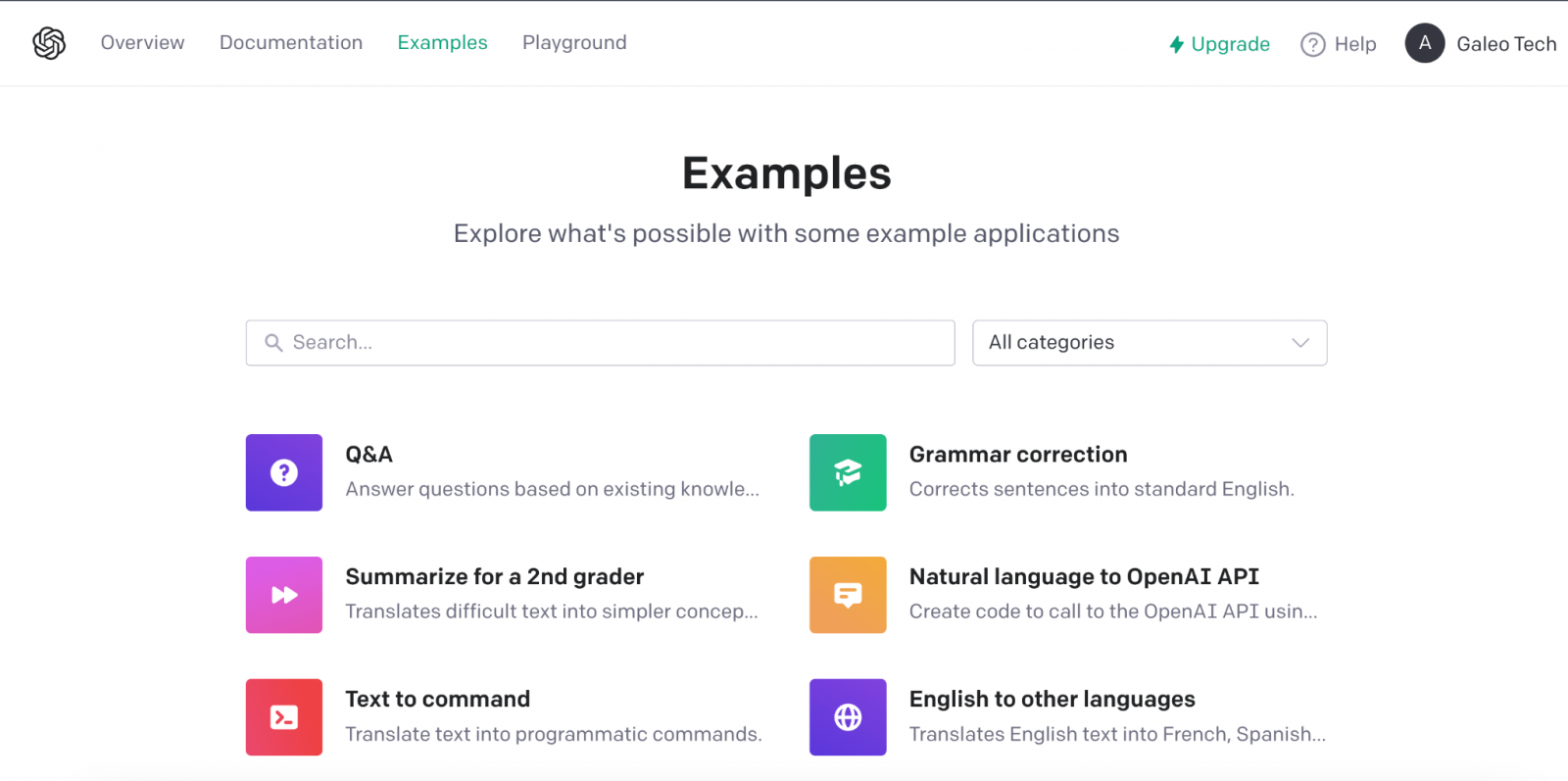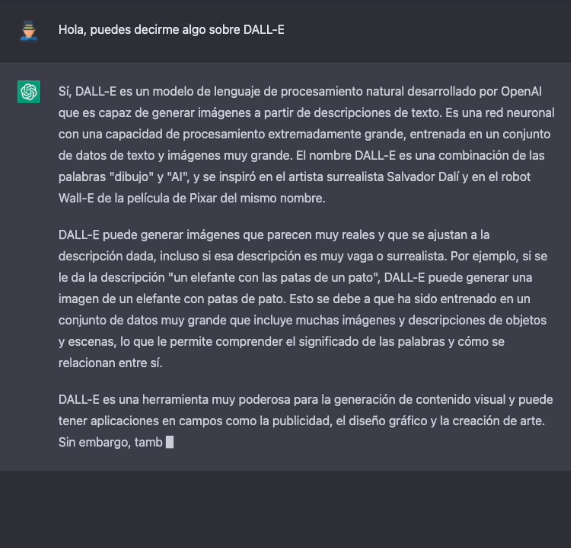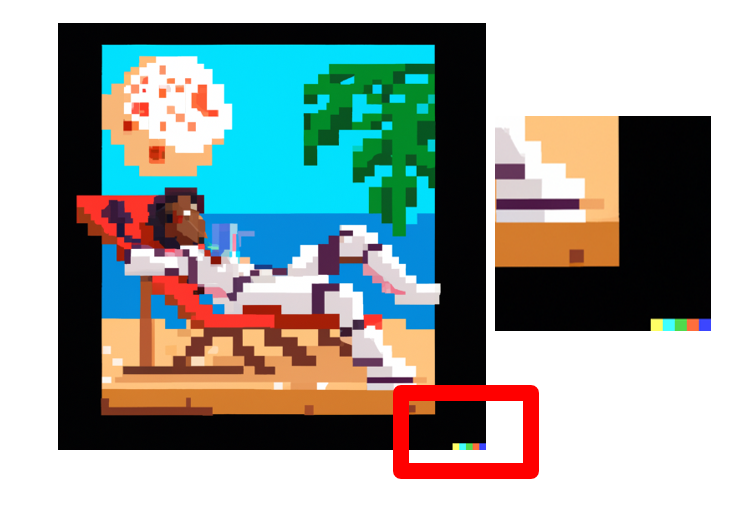
For years now we have been announcing that Artificial Intelligence is undergoing one of its most prolific, exciting periods. A time when applications and use cases begin to be seen in which human intelligence merges with artificial intelligence. Some occupations are changing forever. Journalists and writers now have software tools that can write for them. Content creators - images or video - can ask the machine to create for them just by saying a phrase. In this post we have taken a closer look at this last example. We have been able to test Dall-e 2 and the results have left us speechless.
Introduction
Nowadays, in the technological community worldwide, there is an underlying buzz, a collective excitement of all lovers of digital technologies and in particular of artificial intelligence. On several occasions we have mentioned the innovations of the company Open AI in this communication space. We have written several articles where we talk about the GPT-3 algorithm and what it is capable of in the field of natural language processing. Recently, OpenAI has been doing away with the waiting lists (on which many of us had been enrolled for a long time) to allow us to test in a limited way the capabilities of the GPT-3 algorithm implemented in different types of applications.

Example of the multiple applications of GPT-3 in the field of natural language.
We recommend our readers to try out the text completion tool with which, merely by providing a short sentence, the AI completes the text with several paragraphs indistinguishable from human writing. The last few days have been hectic with crowds of people testing the ChatGPT-3 tool. The degree of naturalness with which AI can have a conversation is simply amazing. The results are having an impact on a wide variety of use cases, such as support for software developers. ChatGPT-3 has been able to programme simple code routines or algorithms just from a description in natural language of what you want to programme. However, the result is even more impressive when we realise that AI is capable of correcting its own programming errors.
DALL-E
Leaving aside the capabilities of generating natural language indistinguishable from that written by a human, now let's take a look the main theme of this post. One of the most amazing applications of the AI of OpenAI is the solution known as DALL-E. What better way to introduce DALL-E than ask ChatGPT-3 what DALL-E is.

The more formal description of DALL-E, according to its own website, is as follows:
DALL·E is a 12-billion parameter version of GPT-3 trained to generate images from text descriptions. DALL-E has a diverse set of capabilities, including creating anthropomorphised versions of animals and objects, combining unrelated concepts in plausible ways, rendering text, and applying transformations to existing images..
There is currently a second version of the algorithm. DALL-E 2 capable of generating more realistic and precise images with a resolution 4 times higher. The tool for trying out DALL-E is available here https://labs.openai.com/. To use it, we first need to create an OpenAI account that will allow us to play with all the tools of the company. When we access the test website we can write our own text or ask the tool to generate random descriptions of images in natural language to create images. For example, by clicking the Surprise me button:

The web generates this random description for us: an astronaut lounging in a tropical resort in space, pixel art
And this is the result:

We repeat: An expressive oil painting of a basketball player dunking, depicted as an explosion of a nebula
We can assure you that the exercise is somewhat addictive and we admit that some of us have spent hours of our weekends playing with the descriptions and waiting, over and over again, for the amazing result.
About DALL-E 2 training
DALL-E 2 (arXiv:2204.06125) is a refined version of the original DALL-E system (arXiv:2102.12092). To train the original DALL-E model, which contains 12 billion parameters, a set of 250 million text-image pairs was used (publicly available online). This data set is a mixture of several prior datasets comprising: Conceptual Captions by Google; Wikipedia's text-image pairs and a filtered subset of YFCC100M.
DALL-E 2 trivia
Some interesting things besides the tests that we can do to generate our own images. OpenAI has created a specific Github repository which describes the risks and limitations of DALL-E. At the site it is reported, for example, that, for the time being, the use of DALL-E is limited to non-commercial purposes. So it is not possible to make any commercial use of the images generated. In other words, they cannot be sold or licensed under any circumstances. In this regard, all the images generated by DALL-E include a distinctive mark that lets you know that they have been generated by AI. At the Github site we can find loads of information about the generation of explicit content, the risks related with the bias that AI can introduce into the generation of images and the inappropriate uses of DALL-E such as the harassment, bullying or exploitation of individuals.

Along national lines, MarIA
Along national lines, after months of tests and adjustments, MarIA, the first supermassive artificial intelligence, has seen the light of day, trained with open data from the web archives of the National Library of Spain (BNE) and thanks to the computing resources of the National Supercomputing Centre. With regard to this post, MarIA has been trained using the GPT-2 algorithm which we have talked about many months ago in this space. To carry out the MarIA training, 135 billion previous words from the National Library's documentary bank have been used with a total volume of 570 Gigabytes of information.
Conclusions
As the days and weeks go by since the general opening of the APIs and the OpenIA tools, there has been a torrent of publications on all kinds of media, social media and specialised blogs about the capabilities and possibilities of Chat GPT-3 and DALL-E. I don't think that at this time anyone is capable of predicting the potential commercial, scientific and social applications of this technology. What is clear is that many of us think that OpenAI has shown only a sample of what it is capable of and it seems that we may be on the verge of a historic milestone in the development of AI after many years of overexpectations and unfulfilled promises. We will continue to report on the progress of GTP-3, but for the time being, all we can do is to keep enjoying, playing and learning with the simple tools that we have at our disposal!
Content prepared by Alejandro Alija, an expert in Digital Transformation.
The contents and points of view reflected in this publication are the sole responsibility of its author.
Hola me parece que sobre IA deberiamos estar bien atentos a la informacion que es open data ya que esta claro que es el futuro de muchas cosas. gracias por dar a conocer a todos esta informacion.